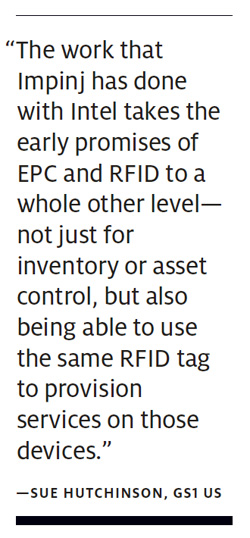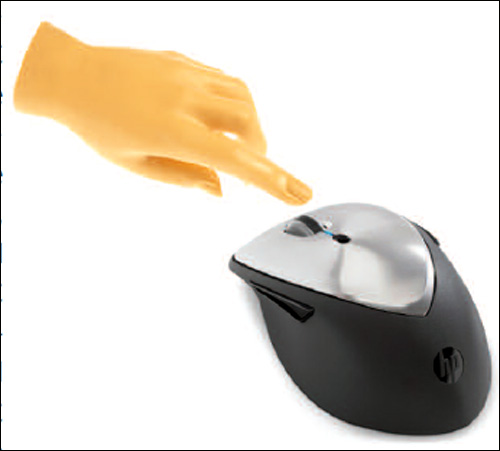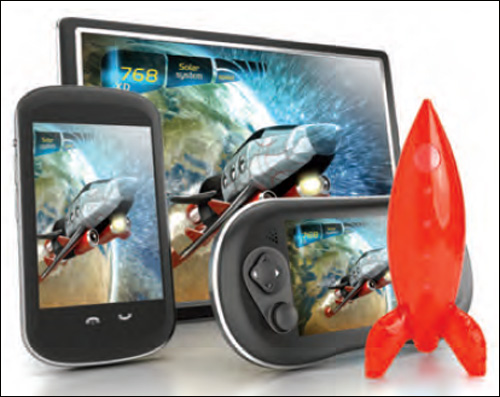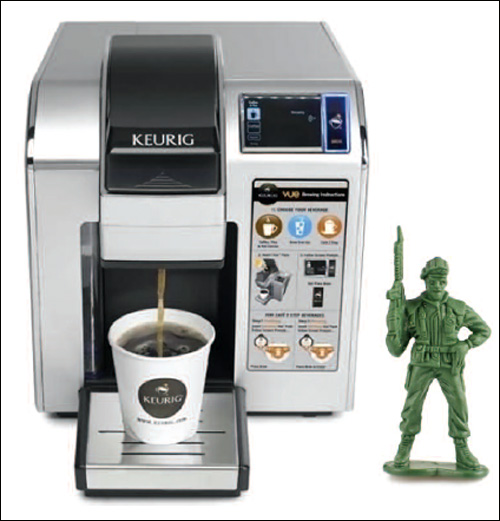For the most part, the consumer electronics industry has been sitting on the sidelines, watching as myriad companies in other sectors adopt radio frequency identification and derive benefits from the visibility the technology provides. Yes, there have been some RFID pilots and deployments, most notably Hewlett-Packard Brazil‘s tagging and tracking of individual inkjet printers from production through distribution. And there has been the promise of using RFID for life-cycle tracking of computers, TVs and other electronic products—that is, RFID-tagging electronics during production, tracking them through delivery to retailers, using the item-level tags to manage inventory, warranties and repairs, and, lastly, ensuring old devices are disposed of properly.
HP Brazil has demonstrated that it is possible to leverage tag information to manage recycling. But using RFID to manage consumer electronics “from cradle to grave” has remained just a promise—until now. In April, Intel unveiled a reference design for an ultrahigh-frequency RFID chip that’s embedded in a device’s motherboard and wired directly to the microprocessor. (Intel won the 2012 RFID Journal Award for Best Use of RFID in a Product or Service; see A New Tool for Electronics Companies.)
The design could jump-start RFID adoption by consumer electronics makers and retailers because it enables numerous benefits, including streamlining operations, deterring theft and improving customer satisfaction. The new Windows 8 tablets are likely to be the first devices to feature this design.
Intel worked with Impinj, which developed two new RFID chips for the design: the Monza X-2K Dura and the Monza X-8K Dura. Both chips have a secure memory bank with nonvolatile (read/write) and immutable (read-only) storage that is low-power and cost-effective. The RFID chip is accessible by the processor through a standard inter-integrated circuit (I2C) interface and from a handheld or fixed RFID reader, enabling wireless bidirectional communications. The secure storage can hold information such as personal identification and manufacturing records.
“The work that Impinj has done with Intel takes the early promises of EPC and RFID to a whole other level—not just for inventory or asset control, but also being able to use the same RFID tag to provision services on those devices,” says Sue Hutchinson, director of portfolio strategy for GS1 US. Manufacturers, for example, could use an RFID reader to disable an electronic product during transit, to deter theft. Once the item reaches a store, a retailer could use an RFID reader to enable the device while it’s in a sealed box.
NXP Semiconductors, last year, introduced a similar interactive tool for consumer electronics—the Ucode I2C, a UHF EPC Gen 2 chip that can be embedded in a device’s printed circuit board (PCB). Its I2C serial bus also enables quick communication between the RFID chip, which sends its instructions wirelessly to or from an RFID reader, and the microprocessor. As with the Intel/Impinj approach, a reader can access the chip’s memory even when the device’s power is off.
“We believe the I2C feature should enhance the RFID adoption rate, since it adds further value at multiple stages of the product’s life cycle,” says Gerry Hubers, marketing segment manager of Murata Americas, which makes the MagicStrip UHF RFID module that can be mounted on a PCB. The module can use Impinj or NXP chips and take advantage of these suppliers’ key features. “Using the RFID channel as the communication path,” Hubers says, “the CE product can be easily programmed, or reprogrammed, based on the end-customer requirements. This step can be done just prior to shipping, late-stage configuration, for that specific customer. Taking this approach could eliminate dedicated inventory for selective customers, since product is programmed just prior to shipment.”
The Benefits Chain
Why is the RFID-microprocessor integration design considered a potential game changer for the consumer electronics industry? Here’s a closer look at the benefits it could deliver to manufacturers and retailers.
Streamlined operations. Some consumer electronics companies have been RFID-tagging DVD players, TVs and other items to meet retailers’ requests, says GS1’s Hutchinson. They typically tag the device’s faceplate, and retailers use the tag for inventory management. Others are attaching the RFID tag inside the case of the finished product, for warranty service or returns processing, says Impinj’s VP of marketing, Kerry Krause. Either way, most consumer electronics companies consider RFID-tagging a cost of doing business.
If, instead, the RFID chip were embedded in the circuit board, manufacturers could use its unique serial number to achieve internal benefits, beginning with tracking work-in- process (WIP). Of course, the RFID chip doesn’t have to be embedded in a device’s motherboard to use the technology to track WIP.
But with RFID embedded in the circuit board, manufacturers also could reduce inventory and the number of configurations they make and manage. Take a mobile phone manufacturer, for example, that ships some units to Sprint and others to Verizon, suggests Victor Vega, marketing director of RFID solutions for NXP Semiconductors. Instead of having to build two separate versions to accommodate the different feature sets, “you can wirelessly configure production batches in accordance with various order-fulfillment requirements,” he says. “For example, the same electronics ‘engine’ may be set up differently for the first 100 units than for the next 100.”
Configuration management could be a boon for retailers as well. A retailer could reduce its inventory without the risk of disappointing customers by running out of stock. It could, for instance, order all its tablets configured for the English language. If a customer requests a different language, the retailer could use an RFID reader to send instructions to the RFID chip, which would pass the information to the microprocessor to make the change.
Theft deterrence. There’s no reason to steal an electronic device that doesn’t work. With RFID-microprocessor integration, manufacturers could use a wireless command to “lock” devices before they are shipped, and retailers could reactivate them with an authentication code once they reach the store or point of sale. That would discourage items from “falling off the truck” or being swiped from distribution centers and store shelves. The embedded RFID tag could still transmit its unique identification number through backscatter, so the disabled device could be traced as it moves through the supply chain.
Product identification. In Intel’s design, the information required to authenticate a device can be secured in immutable storage. NXP’s solution uses a unique Tag Identifier, which can’t be altered even if the Electronic Product Code serial number is copied, to authenticate a product. “Wireless authentication and validation essentially come for free,” Vega says, “and [the Tag Identifier] helps curb fraudulent activity as well.” A counterfeiter, for example, would not be able to exchange a fake device for a real one at a retail store or an authorized manufacturer service center.
But if a legitimate customer needed to return a device or have it serviced, the authentication information could be captured to verify the product and connect it to the original sales record and warranty data, speeding up the process. If a device couldn’t power up, a clerk still could read the contents of the RFID chip, including data saved in the error log that could provide a clue to the fix. Storing the product’s warranty and repair information on the RFID chip would provide a record of the product’s life-cycle history.
Customer satisfaction. An online or brick-and-mortar store could boost sales by offering a free software upgrade, and make the change while the device is still in its factory-sealed carton. Or a retailer could advertise a tablet that includes two months of free service from a company such as Netflix, which could be recorded in the RF chip at purchase, says Shahrokh Shahidzadeh, senior principal technologist at Intel, who spearheaded the project. “When the buyer turns on the tablet, a pop-up appears and he is one click away from the service.”
There are many other ways to customize a product, Vega says. Wi-Fi credentials could be preconfigured for an instant connection. All the information could be stored in the RFID chip; when the recipient powers up, the microprocessor would look for new information, extract it and import it back into the device. Or a customer who’s buying a device as a gift could ask the retailer to upload a personal message on a selected background graphic. “Everything will look like it was made for them that way at the factory,” he says.
From Promise to Reality
While consumer electronics manufacturers embrace the notion of using an EPC RFID tag to provide visibility benefits all the way from the point of manufacture through the supply chain, retail and post-consumer use, Hutchinson says, it’s still too early to say if or when they’ll embed RFID chips in their devices’ motherboards.
It might be PCB providers and other component manufacturers that kick-start the CE industry in this direction, posits Michael Liard, RFID analysis director at VDC Research. They could differentiate themselves by offering manufacturers a regular board or an embedded RFID chip model. “That could be seamless for the manufacturing processes,” he says. “If they apply it as a value add, and it’s not disruptive to existing processes, it might be an easier sell.”
The incremental cost of embedding RFID compared with the potential revenue-enhancement opportunities must be considered, Vega says. “If two tablets are the same price, but you could customize one of them, wouldn’t you pick that one? Is there a value to that? I think so,” he says. “Is it worth a quarter or 20 cents or whatever the chip would be for that additional feature for the manufacturer, retailer and consumer? I think so.”
If manufacturers embed RFID chips in their devices’ motherboards, will retailers take advantage of the new feature? They have competing priorities, says John Devlin, practice director of RFID and authentication at ABI Research. “They have finite budgets each year and a fast-developing area for them is around mobile.” RFID is in the mix, but “they have to choose carefully and prioritize where they go.”
It’s practically a no-cost opportunity for retailers to reduce inventory and cut down on fraud, Vega says. Some retailers already have handheld equipment that recognizes both bar codes and RFID, so the upgrade to support these capabilities would be straightforward. Or, he says, they could start small, with a kiosk where shoppers could go to customize, register or return their devices. The manufacturer might take on the cost of that installation, he adds.
That said, buy-in at the retail level isn’t necessary to start the ball rolling, Krause says. Things will shift into gear as “electronics manufacturers decide to embed the RFID tag into their devices for whichever apps give them the biggest return,” he says. “That may be locked-in-transit or configuration management or enhanced return merchandise authorization, service and returns. I would expect evolutionary progress on this front.”
Tap and Play
It didn’t take long for folks to consider smartphones and tablets essential to their way of life. In short order, we’ve become used to the convenience and freedom these devices provide—so much so, that we often find Bluetooth, the predominant technology that enables wireless connectivity, a hassle. You have to turn a Bluetooth device on, scroll through menus and settings, and enter a passcode to get it to pair with the available service.
Near Field Communication (NFC), a short-range wireless technology that enables device-to-device data transfers, takes the hassle out of connectivity. Mobile phones equipped with NFC let you connect with a tap, whether you’re paying for a product or exchanging information with another NFC-enabled mobile phone. Acer, HTC, Motorola, Nokia, Research in Motion (RIM), Samsung and Sony are among the vendors offering NFC phones. Similarly, NFC-enabled hybrid laptop-tablets, such as the Windows 8-based HP Envy x2, let you connect to other NFC devices with a tap, so you can easily share photos, contacts and more. Tablets based on Microsoft‘s Windows 8 and Google‘s Android operating systems also feature NFC connectivity. Asus, Lenovo, RIM (with its own OS), Samsung and Sharp are among the vendors planning or offering NFC tablets.
Now, a wave of peripherals is arriving to take advantage of these NFC-enabled devices. HP, for example, in September, released its Touch to Pair Mouse, which can connect automatically with an NFC tablet or PC via a tap. (It also can make the connection via Bluetooth if the computer or tablet doesn’t have NFC.)
But perhaps the biggest trend in NFC accessories is headphones, wireless speakers and other audio devices (most are compatible with Bluetooth phones and tablets). Sony, this summer, introduced the MDR-1RBT NFC headset and its NFC SRS-BTM8 wireless speaker, which need only be tapped with an NFC smartphone to play music. Nokia and JBL worked together to add NFC to the JBL PlayUp Portable Wireless Speaker for Nokia, for a one-tap-from-a-phone connection to songs.
RIM’s Blackberry Music Gateway is an accessory for its smartphones or tablet—tap it on top of an NFC RIM device and it streams audio wirelessly from that device to a car or home stereo. Similarly, Belkin’s Music Box module lets you remotely stream music and playlists from a wireless Bluetooth mobile phone or tablet to a stereo system or active speakers. The module uses NXP Semiconductors’ NTAG203F NFC integrated chip, which includes a Field Detect output. This feature enables both autopairing and autopowering, says Victor Vega, marketing director of RFID solutions for NXP, so you don’t have to manually switch on the device.
“Now electronics may be powered off for green purposes, and the tap then asserts an output on the NFC chip’s Field Detect, implying the tag is in the vicinity of an NFC device, which is conversing with the tag,” Vega says. “This then activates a Power Management Unit, which then powers up the device automatically. Then the Bluetooth pairing is accomplished automatically, and the script in the device automatically launches music streaming. So now, it’s literally ‘tap ‘n’ go.'”
Gaming the Competition
Near Field Communication may be the key to winning the ongoing battle for market share among gaming console manufacturers and video game makers. The short-range wireless technology enables device-to-device data transfers, bridging the divide between physical and virtual play—and kids of all ages love it.
Protecting Your Brand
If you don’t have a barista serving up a perfect cup of your coffee or hot chocolate, how do you ensure customers brew a beverage that’s worthy of your name? The answer, says Keurig, which makes single-cup brewers and beverage packets, is RFID.
In September, Green Mountain Coffee Roasters, which acquired Keurig in 2006, introduced the Office Vue V1200 coffee brewer equipped with My Brew RFID technology, developed by Keurig. Each device has a built-in reader that scans a passive EPC Gen 2 ultrahigh-frequency tag embedded in a single-brew beverage packet (a sealed prepackaged cup). Each tag is programmed with a specific recipe code for, say, Nantucket Blend coffee or Dark Chocolate hot cocoa. When a packet is inserted into the brewer, built-in software chooses the appropriate settings—water temperature, time and airflow, for example—for the selected beverage.
Keurig wants customers to have a positive experience by “optimizing each and every brew,” says Dave Manly, VP and general manager of the company’s Away From Home Marketing and Digital Direct division. “Only authorized Keurig products can be used in the brewer… ensuring the quality that our consumers have come to know and love each time they see the Keurig brand.”
The VUE V1200 is designed for use in offices and waiting areas. As the company gains more experience with RFID, Manly says, Keurig will determine whether the home market calls for coffee machines with the technology.






